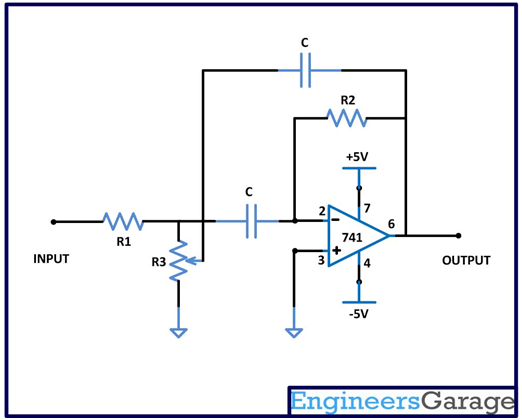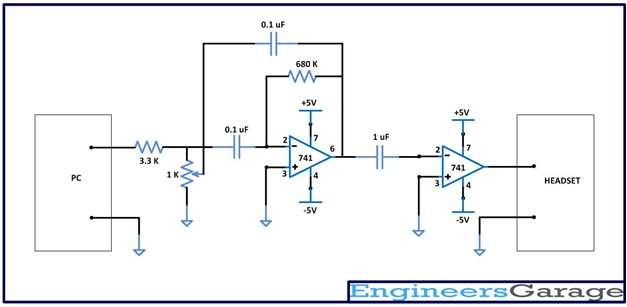The loudspeakers are devices which are designed to reproduce the actual voice according to the voice frequency signals fed into it. The audible voice spectrum stretches from around 20Hz to 20 KHz and the interesting thing is that there is not loudspeaker design which can reproduce all these frequencies with the same effect. Hence there are different kinds of loudspeakers like Tweeters, Mid-range Speakers, Sub-Woofers and Woofers which can reproduce the voice in their own particular frequency bands only.
In an audio play back device, the entire audio signals are separated into different bands and applied to the corresponding type of loudspeaker. The Tweeters are normally fed with frequencies above 5 kHz, Mid-range speakers are fed with frequencies in the range of 300 Hz to 5 kHz, and Sub-Woofers with 300 Hz to 40 Hz and Woofers are fed with frequencies below 40 Hz.
Since the musical sound normally falls around the maximum frequency of 5 to 8 KHz, Tweeters are not so common in audio devices. For driving the Mid-range Speakers a high pass filter of cut-in frequency around 300 Hz is enough and for Woofers a Low pass filter with cut-off frequency around 40 Hz will suffice. Bass-beats of the songs appear in the Sub-Woofer range and a Band-pass filter can be used to separate out these frequencies from the entire audio signals. This project discusses the design and implementation of a Multiple Feed Back (MFB) Band pass filter for Sub-Woofer frequencies.
The MFB filters are very commonly used in circuits due to the fact that they provide reasonable performance with the simplest circuit. They can be designed to obtain narrow bandwidth and high gain. They are suitable for the design of Band Pass filters since the bandwidth, mid-band frequency can be easily adjusted or varied. These circuits has an amplifier with more than one feedback and hence the name. The circuit diagram of a MFB band pass circuit using a single resistor and capacitor feedback is given below;

Fig. 2: Circuit Diagram of MFB Band Pass Circuit with Single Resistor & Capacitor Feedback
The gain of the circuit depends on the value of R1 and R2 and the Q factor (mid-band frequency divided by bandwidth) and bandwidth depends on the values of R2 and C. The value of R3 affects only the mid-band frequency selection and hence it can be used to vary the mid-band frequency without changing the gain or Q factor.
The equations relating the value of the components to the gain, Q factor, bandwidth and mid-band frequency are given below;

To start design this circuit select the required value for the mid-band frequency (Fm), mid-band gain (Am), Bandwidth (B) or Q factor (Q) and capacitor value (C) and the following equations which are derived from the above will help to calculate the value of other components;

For extracting the Sub-Woofer frequencies from the music the band pass filter here is designed for an ‘Fm’ of 70 Hz, Q of 15 and Am of 100 with a capacitor value ‘C’ of 0.1uF. The values of R1, R2 and R3 can be calculated as given below;
Fm = 70 Hz
Q = 15
Am = 100
C = 0.1 uF

Hence for a MFB band pass filter with Fm = 70, Q = 15, Am = 100, one can use the standard value components as given below;
C = 0.1 uF
R1 = 3.3 K
R2 = 680 K
R3 = 1 K
Since this filter will be used to drive a loudspeaker a buffer circuit needs to be added at the output of the MBF band pass filter which will drive the loudspeaker without affecting the filter characteristics. The buffer can also be made easily with another op-amp. The complete circuit is given below;

Fig. 3: Circuit Diagram of MBF Band Pass Filter with Buffer Circuit
The filters like the above can be considered as a ‘Tuned Amplifier’ which will amplify only a particular frequency range. The R1 and R3 attenuate the input signal and from which the desired frequency is only amplified out. In this project the circuit amplifies only the Sub-Woofer frequencies from the music input.
The audio input is fed from a PC and the filtered audio in this experiment is observed with a normal headset, since the headset speakers are designed for the good quality reproduction of both the high frequency sound and low frequency bass. Play some music in the PC which has lot of bass like the one used in the demonstration of this circuit and the output from the circuit will be the bass-beats only.

Fig. 4: Circuit Diagram of MFB Bandpass Filter Audio Sub-Woofer with PC and Headset
Video:
Filed Under: Circuit Design



Questions related to this article?
👉Ask and discuss on EDAboard.com and Electro-Tech-Online.com forums.
Tell Us What You Think!!
You must be logged in to post a comment.